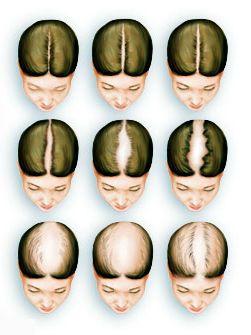Male pattern baldness is a well-known and often-discussed issue, but female hair loss is often overlooked. In reality, female hair loss can be just as impactful on a woman’s appearance as male hair loss, and as such, it is an important topic in the field of medical aesthetics. However, many women are unaware of the available treatment options or how to seek assistance from others.
Female hair loss can be classified into several types of conditions, including androgenetic alopecia (female pattern hair loss), telogen effluvium, anagen effluvium, alopecia areata, and traction alopecia. These different types of hair loss have varying causes, such as childbirth, chronic illness, malnutrition, major surgery, severe mental stress, hypothyroidism, medication, and excessive hair pulling. Traction alopecia, for example, occurs when hair is pulled too tightly and can lead to hair loss, particularly around the hairline.
One of the most common types of female hair loss is androgenetic alopecia, which is often mistaken for a natural sign of aging. Androgenetic alopecia is caused by the negative effects of male hormones on hair growth, such as ovarian cysts, taking high doses of hormonal contraceptives, pregnancy, and menopause, which can all cause an increase in male hormones and affect hair follicles.
Female pattern hair loss is not characterized by a receding hairline like male pattern baldness. Instead, women with androgenetic alopecia typically experience a gradual thinning of hair on the top of the head. Treatment for this condition is more difficult than for male pattern baldness. Although men can take medication to counteract the effects of male hormones, this is not recommended for women. Topical minoxidil solution is commonly used to treat female pattern hair loss, but its effects are temporary and disappear once treatment is stopped. Low-level laser therapy and the use of hair care products to promote hair growth may also be recommended for some patients.
In conclusion, female hair loss is a common and often under-discussed issue that can have a significant impact on a woman’s appearance and self-esteem. Understanding the different types of female hair loss and the available treatment options is essential in seeking effective treatment. If you are experiencing hair loss, seeking a medical professional’s guidance is always the first step.

